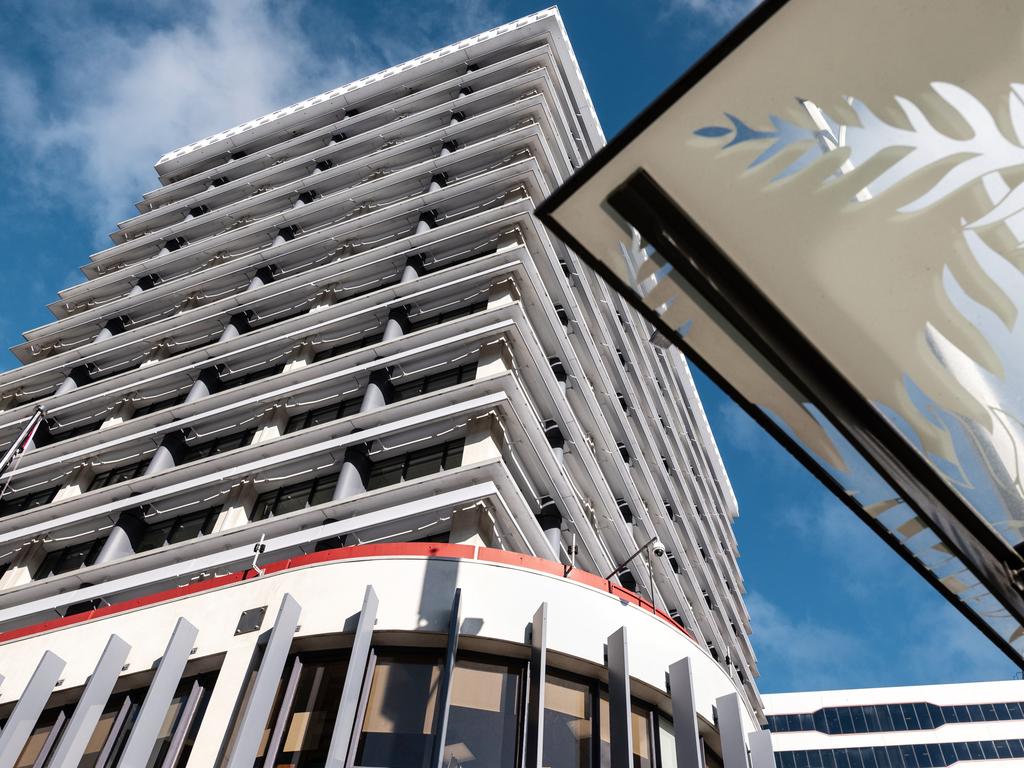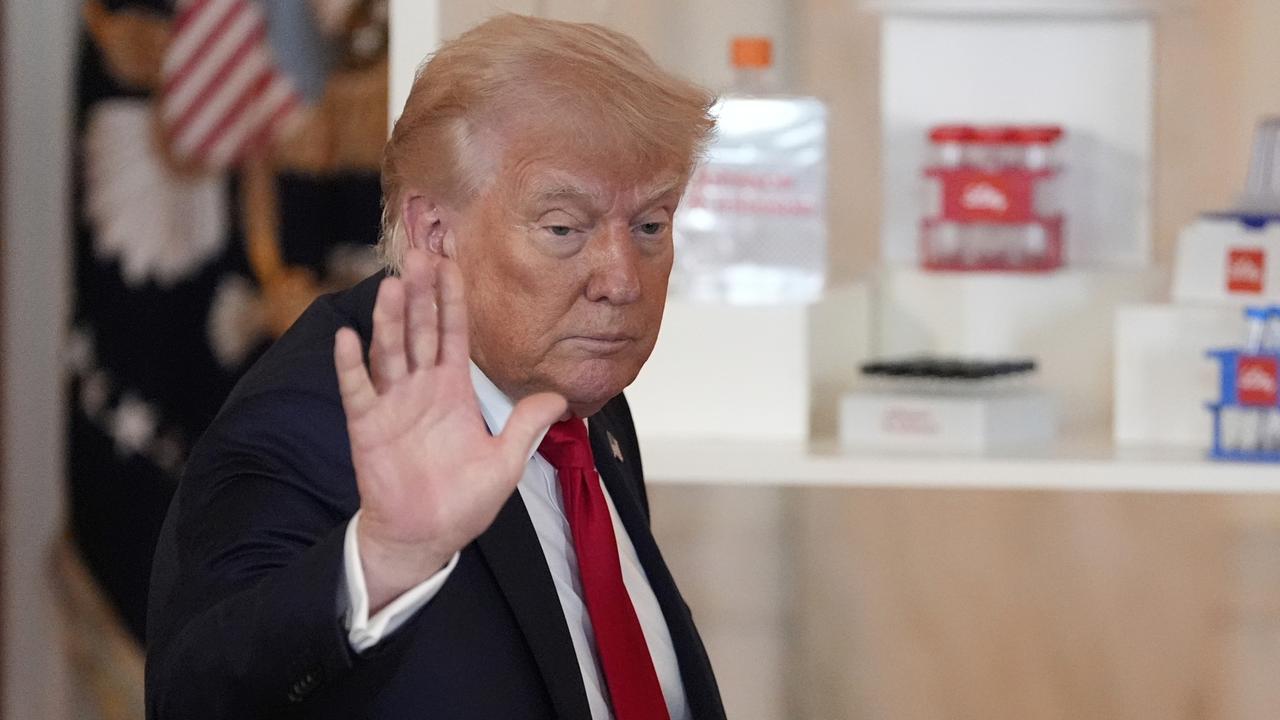RBA may opt for quantitative easing as interest rates near limit
The RBA is nearing the limit on interest rates and may resort to quantitative easing, Westpac’s Bill Evans says.

The Reserve Bank of Australia may resort to quantitative easing — or billions of dollars worth of bond purchases — in 2020, after cutting the cash rate to 0.5 per cent, according to Westpac’s influential chief economist, Bill Evans.
The comments by Mr Evans mark the first of the major bank to shift their tipping behind the RBA looking for other means to fire-up the economy as interest rates lose their impact as they move closer to zero.
The Westpac economist was joined by string of brokerages yesterday including RBC Capital, Morgans and Capital Economics forecasting that Australia could shift to QE by early next year.
Mr Evans believes as the cash rate moves below 0.5 per cent it will start to lose impact and any benefit of further cuts will be outweighed by “unintended consequences” of ultra-low interest rates. This is known as the “effective lower bound”.
“If, as we expect, the move to the effective lower bound will not provide the RBA with sufficient evidence that the economy is on the path to full employment and attaining its inflation target, it may have to consider other policies,” Mr Evans said.
“With negative interest rates being ruled out, asset purchases or loans to banks seem to be the policies that would attract consideration.”
Central banks from Europe to the US Fed have spent hundreds of billions of dollars over the past decade in a monetary experiment known as quantitative easing. The move involves bond buying of government securities with the aim of injecting more liquidity into the banking system to spur more risk-taking and boost growth.
Alan Kohler | It’s the recession we don’t have to have
Since July, Mr Evans has forecast the RBA would cut the cash rate in December and February to a record low 0.5 per cent — down from the current 0.75 per cent — and that the central bank was likely to view 0.5 per cent as the effective lower bound of monetary policy.
Last week RBA governor Philip Lowe said negative interest rates were “extraordinarily unlikely in my country”. Westpac’s Mr Evans said that comment cements the conclusion that the RBA sees the effective lower bound as being “in positive territory and — most likely — above zero”.
His view comes after analysis by Goldman Sachs this month found the RBA’s own model of the economy suggested the central bank would fall well short of achieving its 2 per cent to 3 per cent inflation mandate, even if it cuts the cash rate to 0.5 per cent for the next few years.
The analysis by Goldman Sachs found that the RBA would need to implement a negative 1 per cent cash rate to achieve its unemployment and inflation goals over its two to three year forecast horizon.
“Assuming the RBA refrains from implementing negative rates in practice, we estimate that an equivalent amount of stimulus could be delivered by lowering rates to their effective lower bound — zero to 0.25 per cent — and implementing a QE program worth around $200bn,” Goldman said.
The RBA delivered its third cut in five months in October as economic data mostly remained weak.
At the time, the RBA said: “it is reasonable to expect that an extended period of low interest rates will be required in Australia to reach full employment and achieve the inflation target.”
The RBA added that it is: “prepared to ease monetary policy further if needed to support sustainable growth in the economy, full employment and the achievement of the inflation target over time.”
In the minutes of its October board meeting, the RBA said its members “discussed the possibility that policy stimulus might be less effective than past experience suggests.”
“This point is highly relevant for any discussion around the effective lower bound for the cash rate in this cycle,” said Westpac’s Evans.
The impact of ultra-low rates on confidence was highlighted by a 5.5 per cent fall in the Westpac-MI Consumer Sentiment Index in October to its lowest level for four years after the RBA cut in October.
Banks limiting impact
Mr Evans said recent announcements from banks that their standard variable home loan rate was only being reduced by between 13 and 15 basis points would have been interpreted by the RBA as limiting the impact of the rate cut on the household sector’s cash flow — one of the two channels of monetary policy (along with the exchange rate) which was identified by the board in the minutes.
“Certainly, with the board targeting full employment — currently assessed by the RBA as 4.5 per cent compared to the actual of 5.2 per cent and a move into the 2—3 per cent target zone for underlying inflation — it seems certain that the RBA will reach its effective lower bound before it achieves its objectives.”
While the RBA may see the transmission mechanism through the currency as operating effectively at ultra-low rates, Mr Evans said the confidence effects of negative or zero rates would be “profound” while transmission would be affected by banks’ unwillingness to set negative retail deposit rates.
“Central banks are obsessed with avoiding the deflationary trap experienced by Japan,” he said.
“The signal from a move to negative or even zero rates might risk the onset of deflationary expectations by implying that the central bank held such views.”
Market pricing showed a 17 per cent chance of a cut next month, 48 per cent for December and 85 per cent for February. A cut to 0.5 per cent was fully expected to occur by May 2020.
Mr Evans said he “cannot entirely dismiss the possibility that it will fall to 0.25 per cent.”
He was “somewhat surprised” that the governor signalled in recent speeches that any move to unconventional policies would likely take the form of asset purchases, even though a bank loan program adopted by the Bank of England proved a success.
While not dismissing a bank loan program as an option for the RBA, Mr Evans said it made sense to focus on asset purchase alternatives as the favoured option given the governor’s commentary.
The RBA will now be studying the QE programs used by other central banks, according to Mr Evans.
“Given that they are very close to the effective lower bound, is likely to be prepared to adopt some form of asset purchase program, if needed, over the course of 2020,” he said.
Michael Knox, the chief economist from brokerage Morgans was also tipping the cash rate would move to 0.5 per cent and then move to QE.
“The question is to have a program of continued easing after 50 basis points, I think it is
better to begin quantitative easing”.
RBC Capital Markets chief economist Su-Lin Ong said investors should position for quantitative easing in Australia via yield-curve flattening trades.
With the cash rate set to move to at least 0.5 per cent or lower amid increasing uncertainty over policy traction at ever lower levels, “the QE discussion is set to dominate going forward”.
“We are now beginning to think about how to position for QE, as we expect markets to increasingly speculate over the possibility, timing, and composition,” Ms Ong said.
“We would argue that markets have not really begun to price in QE.”
She did however acknowledge some chance of an aggressive fiscal response — particularly in a co-ordinated global context — which may lessen the need for QE in Australia.
Capital Economics chief economist Marcel Thieliant predicted the RBA will cut the cash rate to 0.25 per cent and launch quantitative easing in 2020.





To join the conversation, please log in. Don't have an account? Register
Join the conversation, you are commenting as Logout